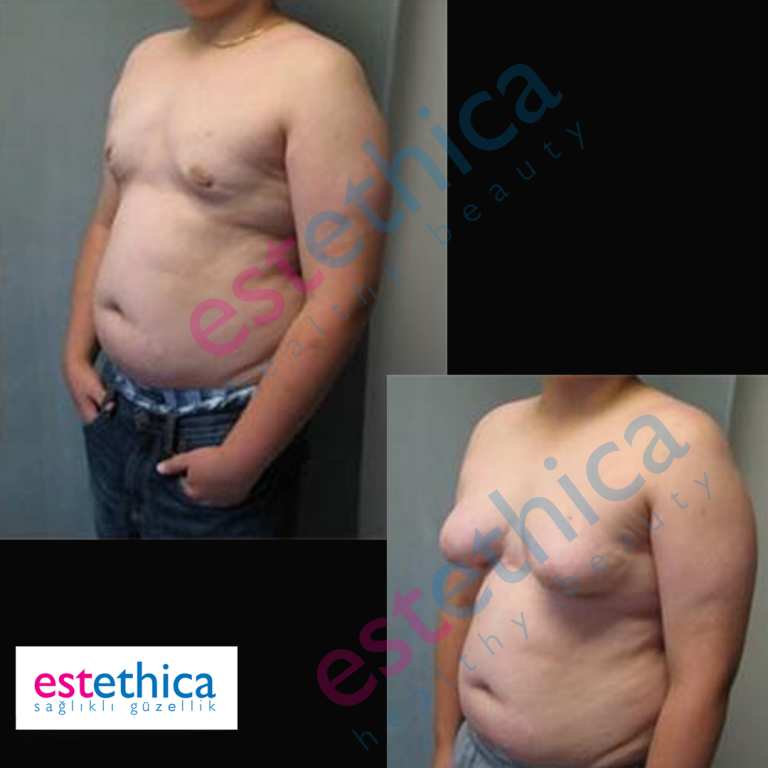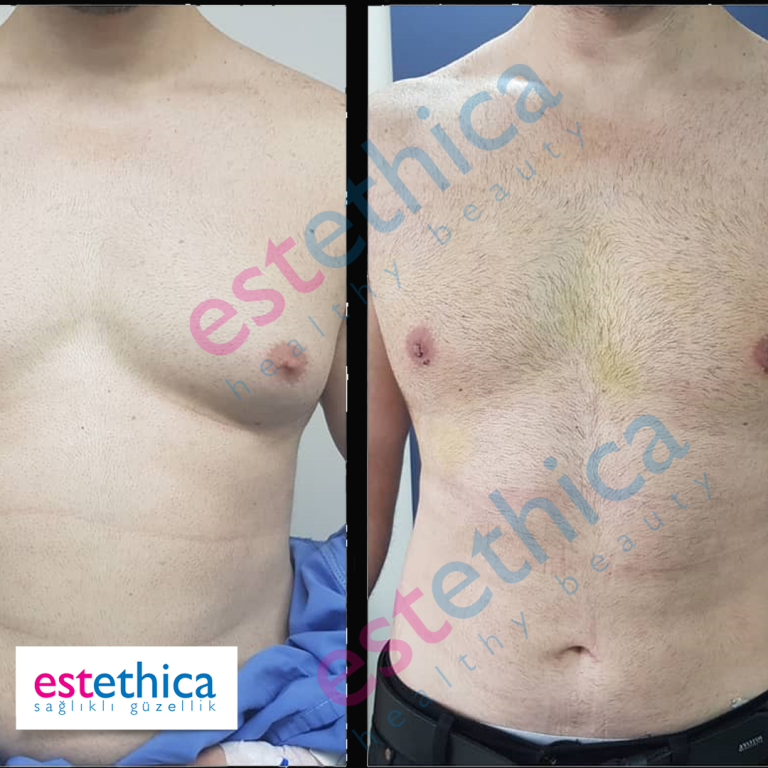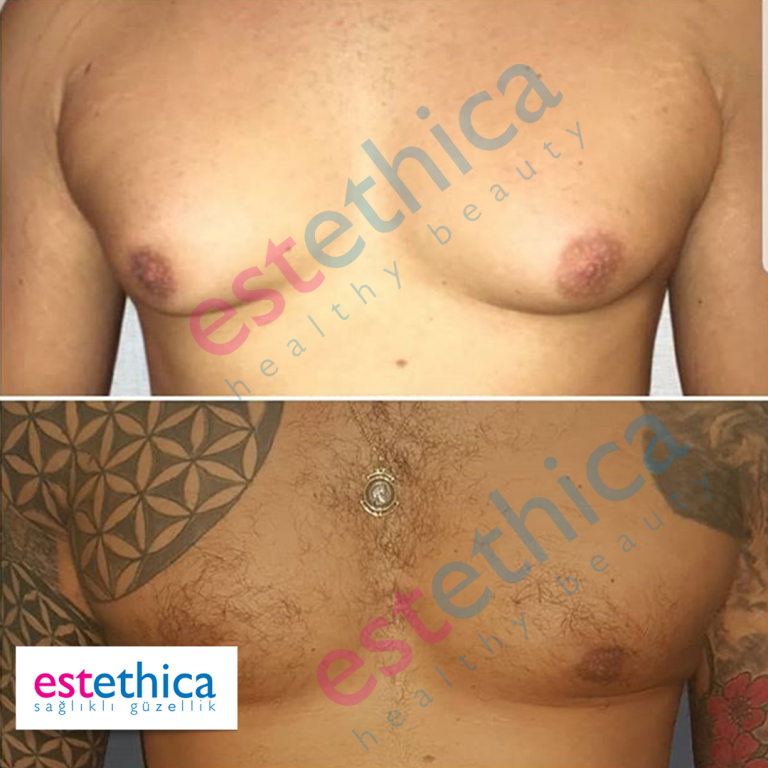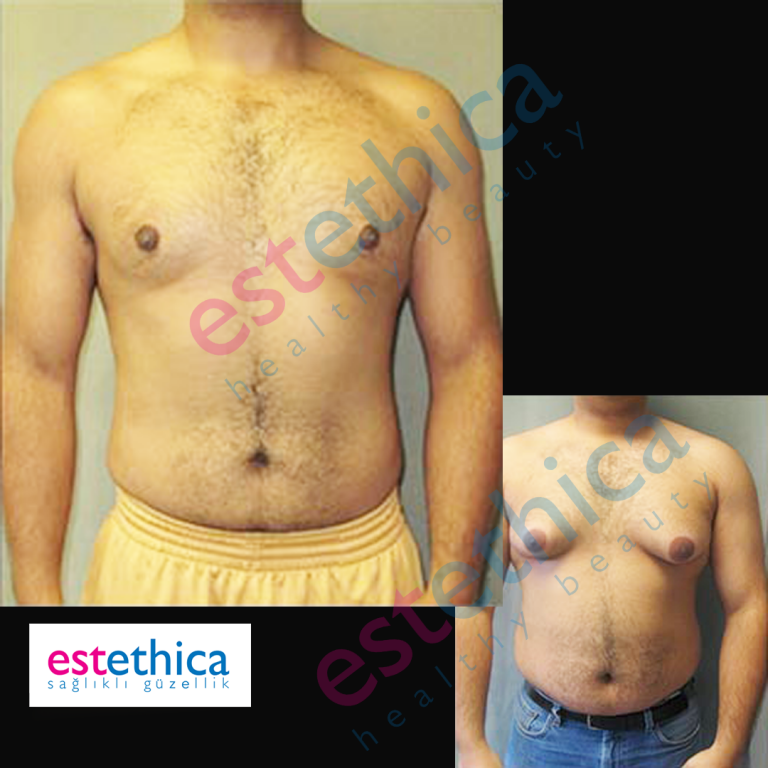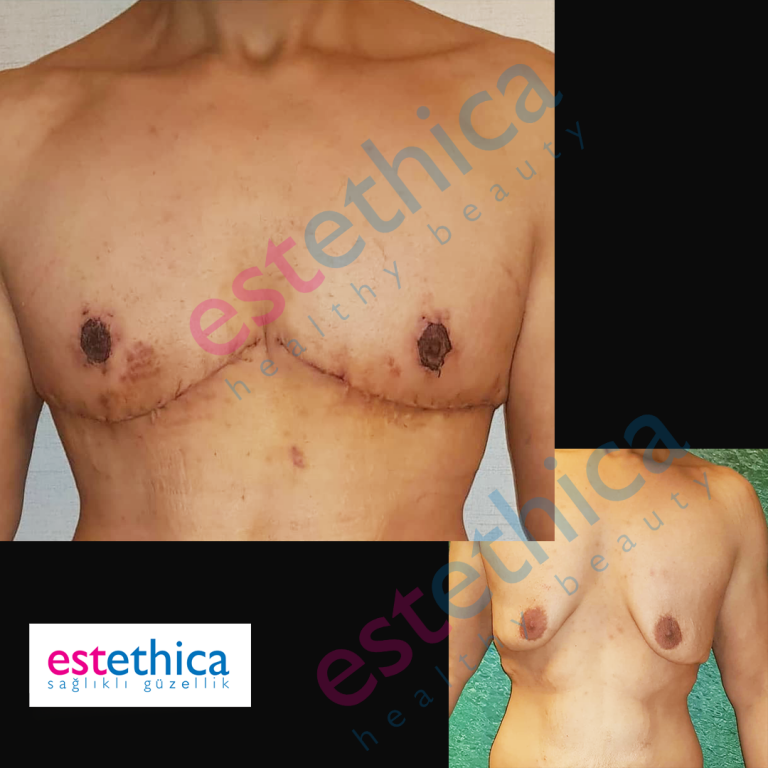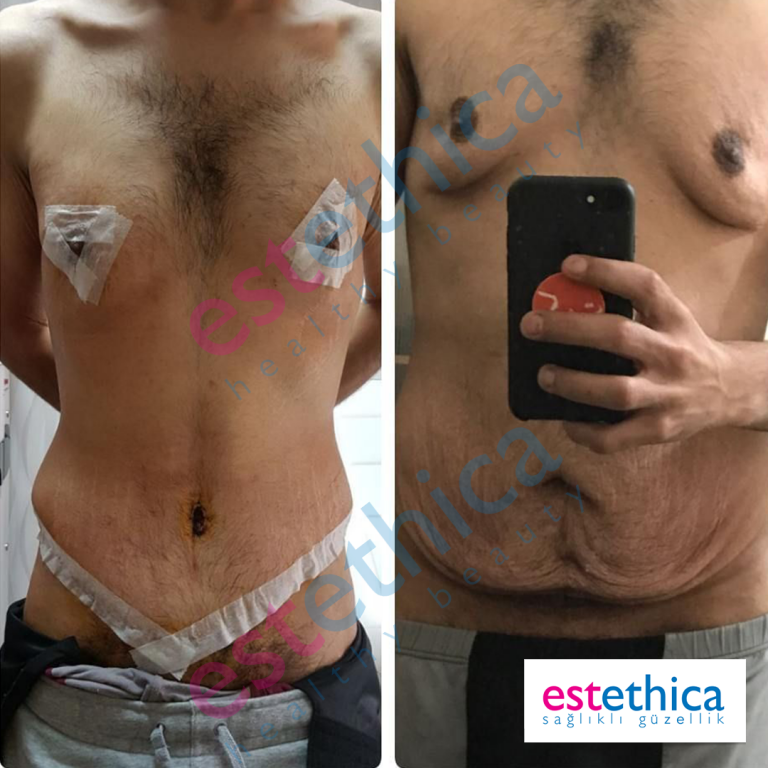Gynecomastia
at estethica Istanbul
Operation - Gynecomastia
Gynecomastia is one of the most important problems that spoil the general appearance, and some people think that it affects their sense of masculinity, and in general, men feel very embarrassed among those around them, especially in the summer season. Non-surgical methods of treating gynecomastia may solve the causes of the problem, while the problem of breast enlargement itself remains and needs surgical intervention.
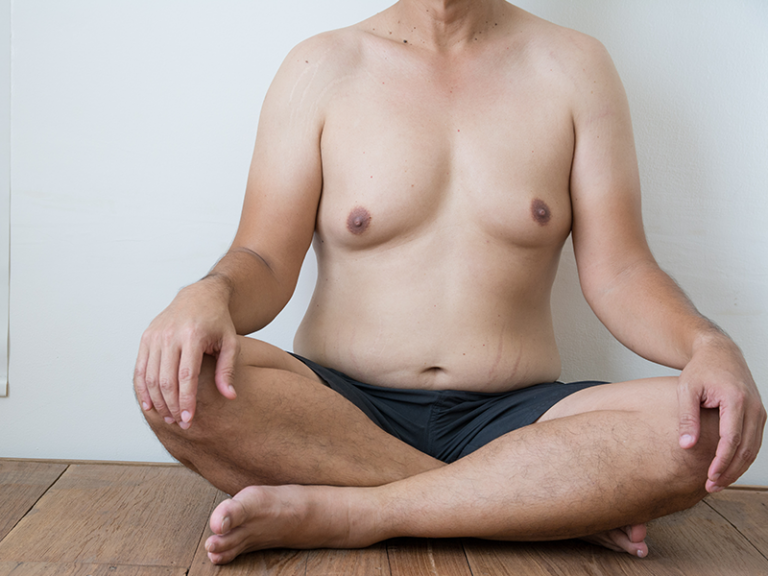
What is gynecomastia?
Gynaecomastia is the growth of breasts in men. Gynaecomastia can be observed in around half of adult men and, besides its aesthetic problems, can cause psychological problems that can lower a person’s quality of life.
Breasts not in the desired form can lead to loss of self-confidence, anxiety, difficulty choosing clothes and psychological and social problems such as depression. Gynaecomastia can develop with breast gland growth (glandular type), excess fat tissue (fat type) or both (mixed type). This type of gynaecomastia can cause a person’s body perception even more harm as the breasts look more similar to those of women in gynaecomastia developing in connection to breast gland increase. Gynaecomastia observed during infancy, puberty and old-age that doesn’t require treatment generally disappears in a few years.
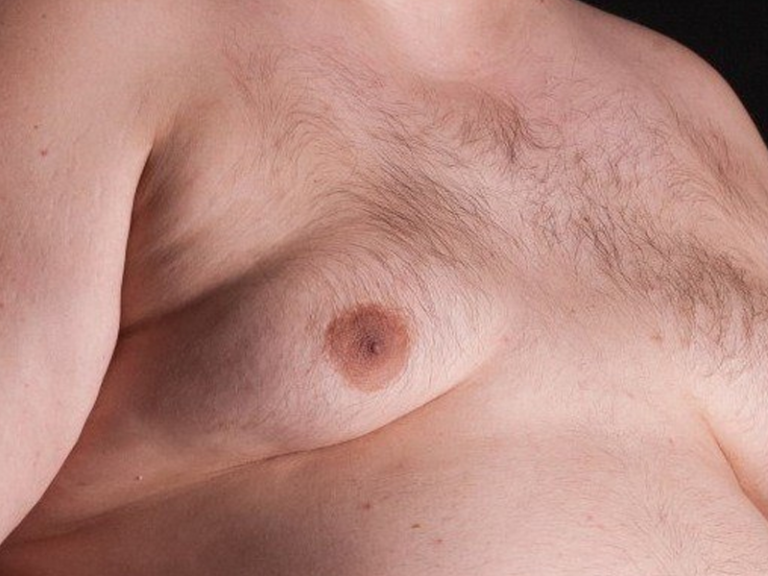
Why is the difference between normal breast structure and Gynecomastia?
Gynaecomastia cannot be ended as is thought with exercise and dieting to reduce fat tissue and increase muscle tissue. On the contrary, exercises that develop chest muscle can cause the chest to be clearer and appear larger.
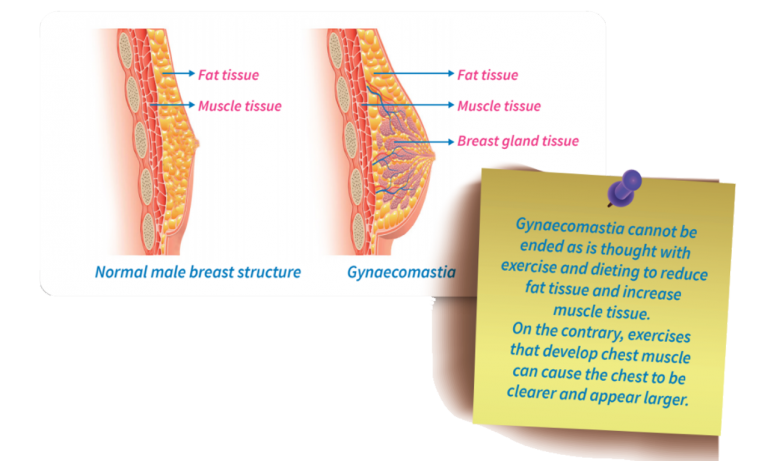
What are the causes of gynaecomastia?
Gynaecomastia can develop too for no reason. The most common situations causing gynaecomastia are these:
- weight gain causing an increase of fat tissue in the breast
- hormonal disorders
- heart, cancer and hormone medication, anti-depressant, amphetamines, cortisone
- alcohol and drug usage
- some types of cancer, especially lung and liver cancers
- glandular cancers on the testes and upper kidneys
- thyroid gland illnesses (goitre)
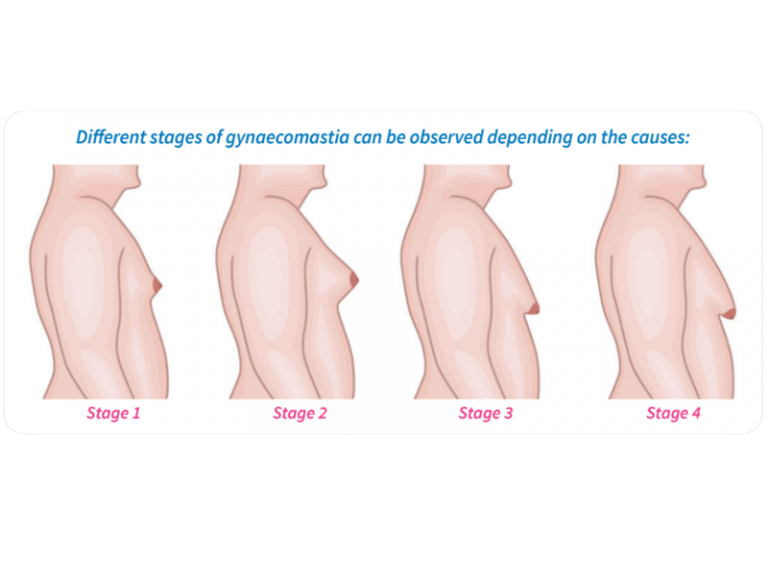
How should gynaecomastia be treated?
First of all, the cause of the gynaecomastia needs to be determined and treated. For this reason, it is very important that the reasons causing gynaecomastia need to be investigated and other possible causes discounted. It should not be forgotten that 30% of the gynaecomastia most commonly seen in the 18-25 age range can be reduced or eliminated by rebalancing hormones.
Gynaecomastia can disappear in cases where the cause is determined and the underlying illness is treated. However, if the cause cannot be determined or an enlarged appearance continues despite the underlying treatment being treated, the only remaining treatment is surgery.
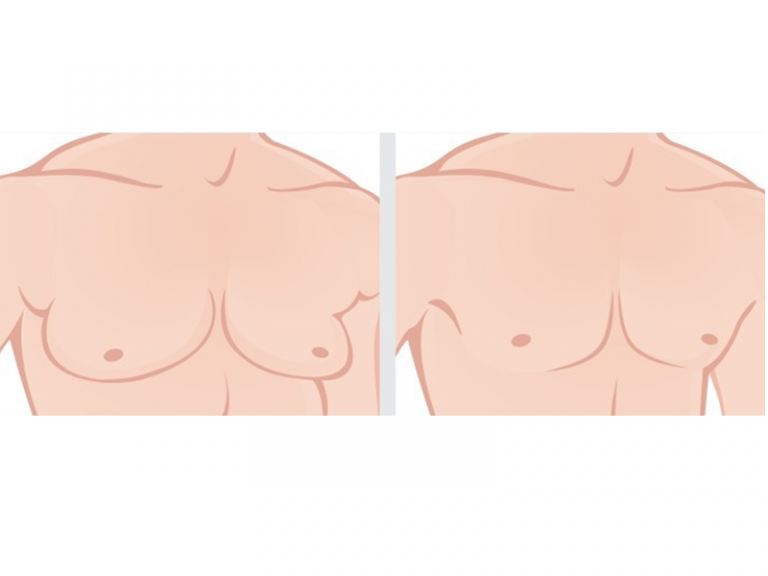
What is the gynaecomastia operation and how is it performed?
The gynaecomastia operation is one of the surgical procedures with the highest levels of patient satisfaction. The gynaecomastia operation aims to attain healthy, dynamic, fit and athletic breasts for the person and is a body shaping operation performed to remove fattening, growth, cambering, loosening, sagging and cracking in the chest area.
Gynaecomastia operations performed at estethica should be evaluated not only in terms of removing excess fat but also in terms of a healthy, dynamic and fit breast design in light of today’s aesthetic values. Our aesthetic and plastic surgery specialists plan the gynaecomastia operation according to the individual requirements of our patients and perform it in a manner that obtains the best possible results.
Performed under general anaesthetic, the gynaecomastia operation is usually planned so as to remove excess tissue via small incisions made around the head of the breast. These incisions made around the head of the breast leave almost no scarring. If there is excess skin, it is removed with this incisions.
Liposuction or laser lipolysis techniques are used during the gynaecomastia operation. Liposuction alone is generally enough to remove excess tissue from the body for young patients who have youthful skin and no breast sagging. For patients who have loose, sagging or stretch marked skin, laser lipolysis is generally preferred method as it helps to tighten and taughten the region.
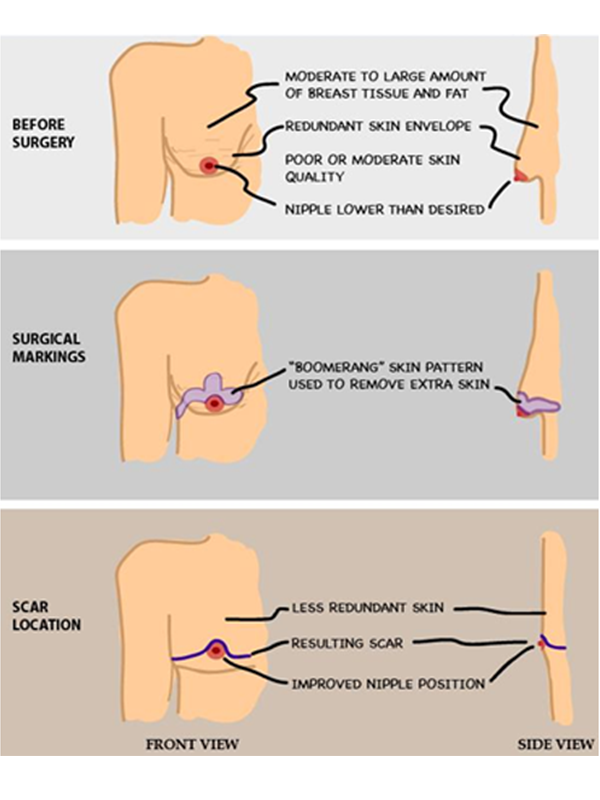
Recovery period
- After the operation, a dull pain can be experienced that can be controlled with analgesics
- The medical korse is used for 2-3 weeks after surgery
- You can return to social life after 3 days
- In the first days after surgery, there may be some swelling, redness and stiffness in the breasts
- Bruises usually disappear one week after surgery, swelling and stiffness after 3 weeks.
- Since the operation is done through small incisions around the nipple, the operation does not leave a trace
- You can notice the new shape of the breasts exactly 3 months after the operation
- Walking is only recommended as a sport for the first three weeks
- After a month of operation, you can exercise lightly and after two months you can do all sports activities
- Weight gain should be avoided as it may lead to sagging skin.
- One of the most important things to watch out for is smoking.
- It is recommended not to smoke for at least 6 weeks, including 3 weeks before surgery and 3 weeks after surgery
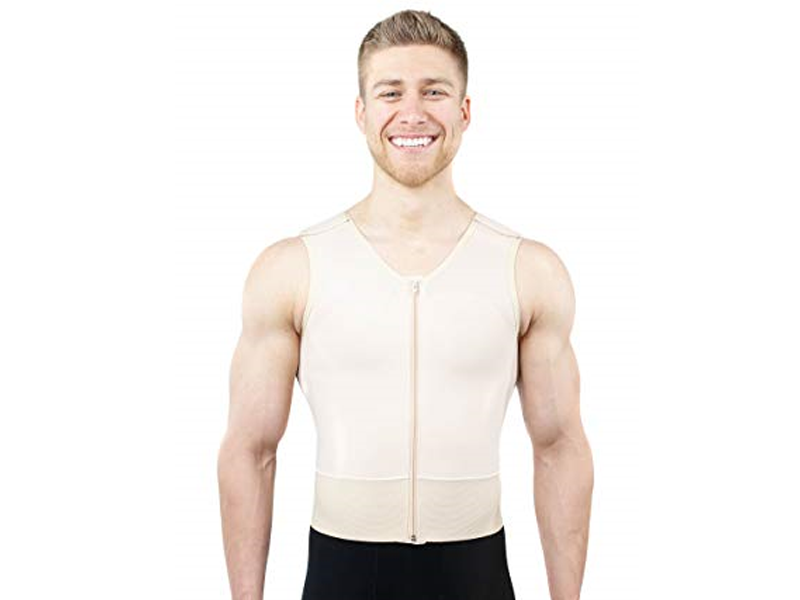
Before and After
